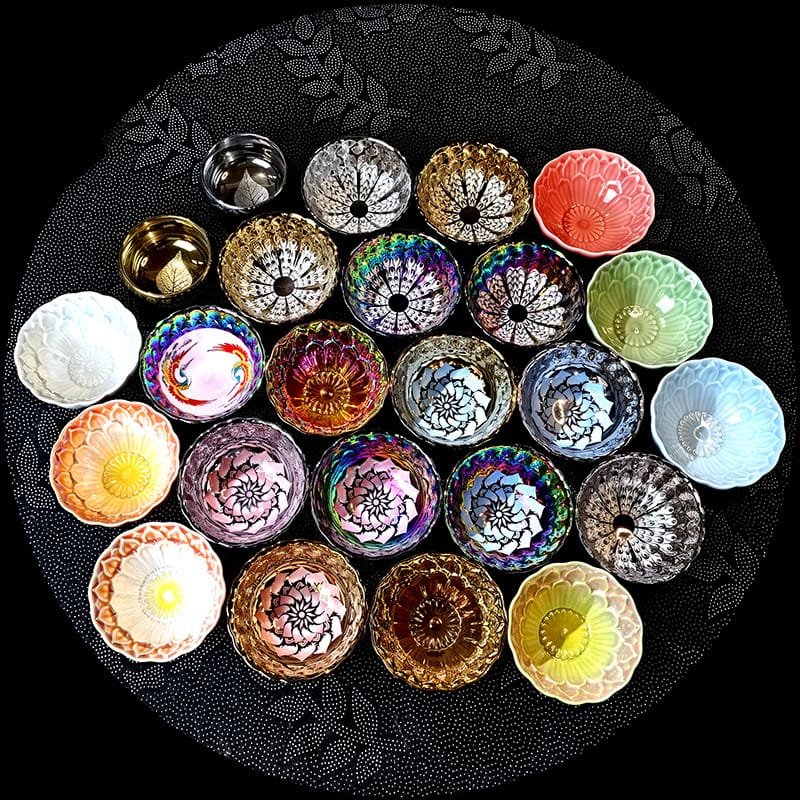What is Jianzhan

Jianzhan, as a treasure of traditional Chinese ceramic art, originated from Jianyang District, Nanping City, Fujian Province. It is a tea cup famous for its unique firing process and rich cultural connotations. The history of Jianzhan can be traced back to the end of the Five Dynasties and the beginning of the Northern Song Dynasty. At first, it was dominated by black tea cups without spots. Later, it gradually developed a variety of patterns and styles, becoming an important part of the tea culture of the Song Dynasty.
Characteristics of Jianzhan
Material and craftsmanship
Jianzhan mainly uses red soil with a high iron content as raw material. After kneading mud, throwing, glazing and other processes, it is fired at high temperature in the kiln of Jian Kiln. Its unique firing process makes each Jianzhan have unique patterns and colors. Common styles include rabbit hair, oil drops, partridge spots and Yaobian. These patterns form a sharp contrast on the black glaze, showing the beauty of nature.
Shape and design
Jianzhan has various shapes, usually with a large mouth and a small bottom, and some are funnel-shaped. It can be divided into four categories: open mouth, slanting mouth, narrow mouth and narrow mouth. Its design not only focuses on beauty, but also takes practicality into consideration. The wide mouth of the cup is convenient for viewing the color and soup of the tea soup, and the thick cup body helps to maintain the temperature of the tea soup.
History and Culture of Jianzhan
Jianzhan has a long history. It first appeared in the Five Dynasties period. In the Northern Song Dynasty, it became popular because it was suitable for “tea fighting”. Tea fighting is an activity to judge the quality of tea by comparing the color and aroma of tea soup. Jianzhan has become an ideal utensil for tea fighting because of its black glaze and white tea soup. Many literati praised Jianzhan and left many popular poems, further enhancing its cultural status.
However, with the change of tea drinking habits, Jianzhan gradually declined in the Ming Dynasty, especially after the Yuan Dynasty, the decline of tea fighting culture caused a sharp decline in the demand for Jianzhan. Despite this, the unique charm of Jianzhan has not disappeared. In recent years, with the revival of tea culture, Jianzhan has regained attention and become a treasure for tea lovers and collectors.
Modern Renaissance of Jianzhan
In modern times, Jianzhan is not only a symbol of tea culture, but also a representative of traditional Chinese craftsmanship. As people attach importance to traditional culture, the production skills of Jianzhan have also been protected and passed down. Many ceramic artists and craft factories have begun to use traditional techniques to produce Jianzhan, striving to retain the traditional style while incorporating modern design elements, so that Jianzhan can be revitalized in the international market.
In addition, the unique artistic value and practicality of Jianzhan have gradually made it recognized internationally and become an important carrier of Chinese cultural exchanges. Through the Maritime Silk Road, Jianzhan was once exported in large quantities to East Asia and Southeast Asia, becoming a bridge for cultural exchanges between China and foreign countries.
Jianzhan is not only a tea utensil, but also a crystallization of Chinese traditional culture and art. It carries rich historical and cultural connotations and shows the unique charm of Chinese ceramic art. With the development of the times, the revival of Jianzhan is not only the inheritance of traditional craftsmanship, but also the re-recognition and re-creation of Chinese tea culture.